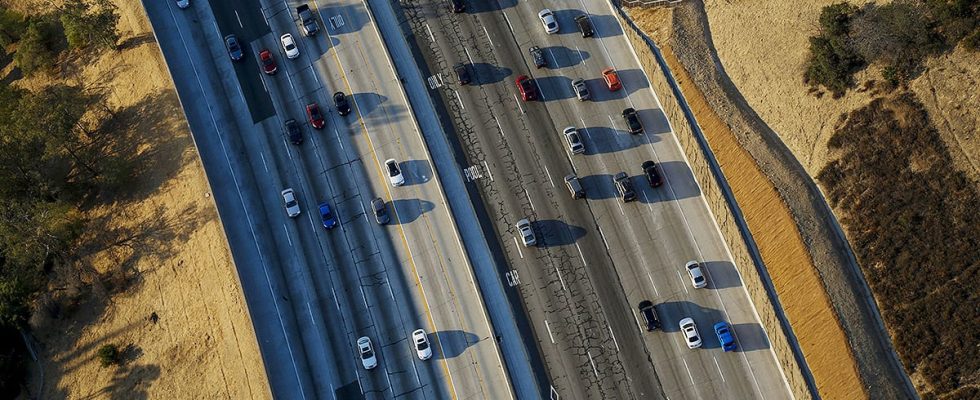WASHINGTON — Three months after the EPA proposed its strictest-ever limits on tailpipe pollution, NHTSA has outlined fuel economy standards for new light-duty cars and trucks that would require an average fleet fuel economy of 58 mpg by the 2032 model year.
The nation’s top auto safety regulator on Friday said its new standards for the 2027-32 model years would require a 2 percent per year improvement in fuel efficiency for cars and a 4 percent per year improvement for light trucks.
NHTSA’s proposal also includes a 10 percent improvement per year for commercial pickups and work vans — those with a gross vehicle weight rating of more than 8,500 pounds but less than 14,001 — beginning in the 2030 model year and ramping up through 2035.
In comparison, standards finalized by the agency last year call for fuel efficiency to increase by 8 percent per year for cars and light trucks in the 2024 and 2025 model years and by 10 percent for 2026. The rule requires an industrywide fleet average of approximately 49 mpg in the 2026 model year.
If finalized as proposed, NHTSA said the new standards could save consumers more than $50 billion on fuel over the vehicles’ lifetime, and U.S. gasoline consumption could be cut by more than 88 billion gallons through 2050. It also would prevent more than 900 million tons of carbon dioxide emissions from passenger cars and light trucks — the equivalent of taking more than 233 million vehicles off the road from 2022 through 2050, NHTSA said.
“We’re excited about today’s announcement as another step in the direction of reinforcing our manufacturing capability here in the United States, lifting up the workers who … are on the cutting edge of defining the next chapter of automotive history,” Ali Zaidi, the White House’s national climate adviser, told reporters during a press call Friday.
To be sure, NHTSA sets standards for five model years at time. The 2032 model-year standard is not legally binding and instead is an agency projection to provide “certainty to automakers and parallel the EPA proposal,” said Ann Carlson, NHTSA’s acting administrator.
The EPA in April unveiled its proposal to significantly reduce vehicle emissions for cars and light trucks in the 2027-32 model years. If finalized, the rule could mean EVs would make up more than half of new-vehicle sales by the 2030 model year and two-thirds by 2032, according to the agency’s projections.
In comments submitted this month to the EPA, the Alliance for Automotive Innovation called the draft rule “a de facto battery-electric vehicle mandate” that is “neither reasonable nor achievable in the time frame provided.”
The trade association — which represents a broad swath of industry players planning to invest hundreds of billions of dollars in electrification — argued that the EPA’s rule, as proposed, puts the U.S. on a “too fast” path for shifting to EVs, consequently giving China an advantage and threatening a just-right transition.
Automakers and their EV battery partners have invested hundreds of billions of dollars toward electrification. However, early consumer adoption has been slower than the industry expected, with reports of EVs stacking up on dealership lots.

